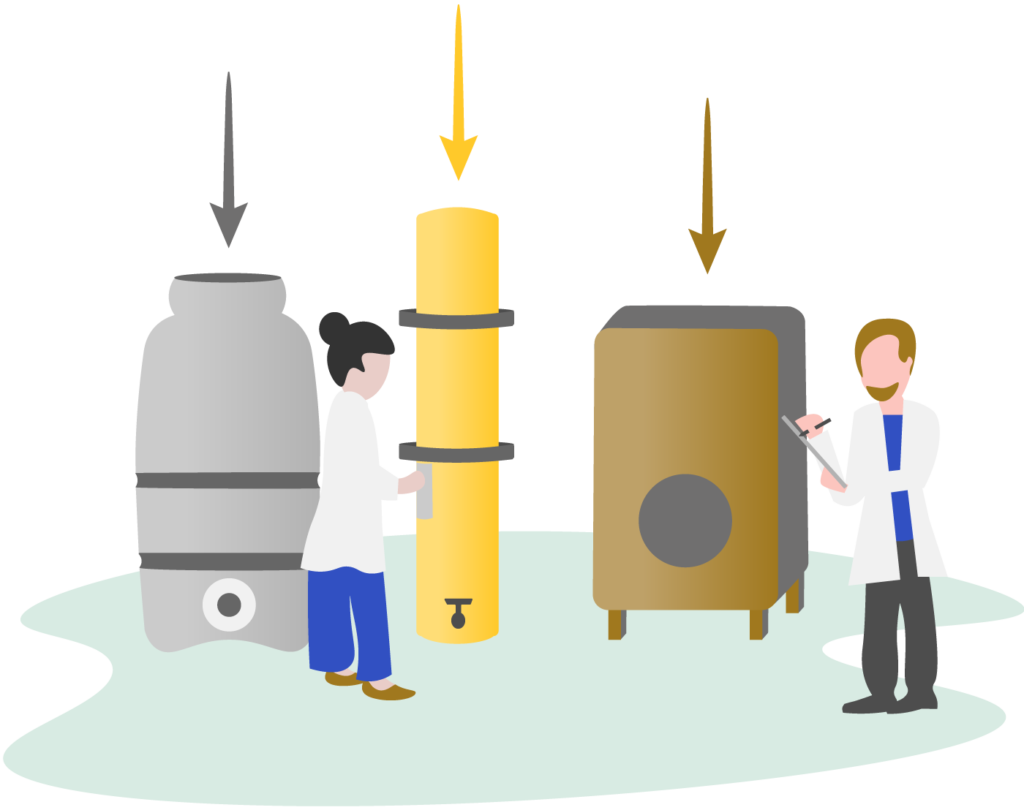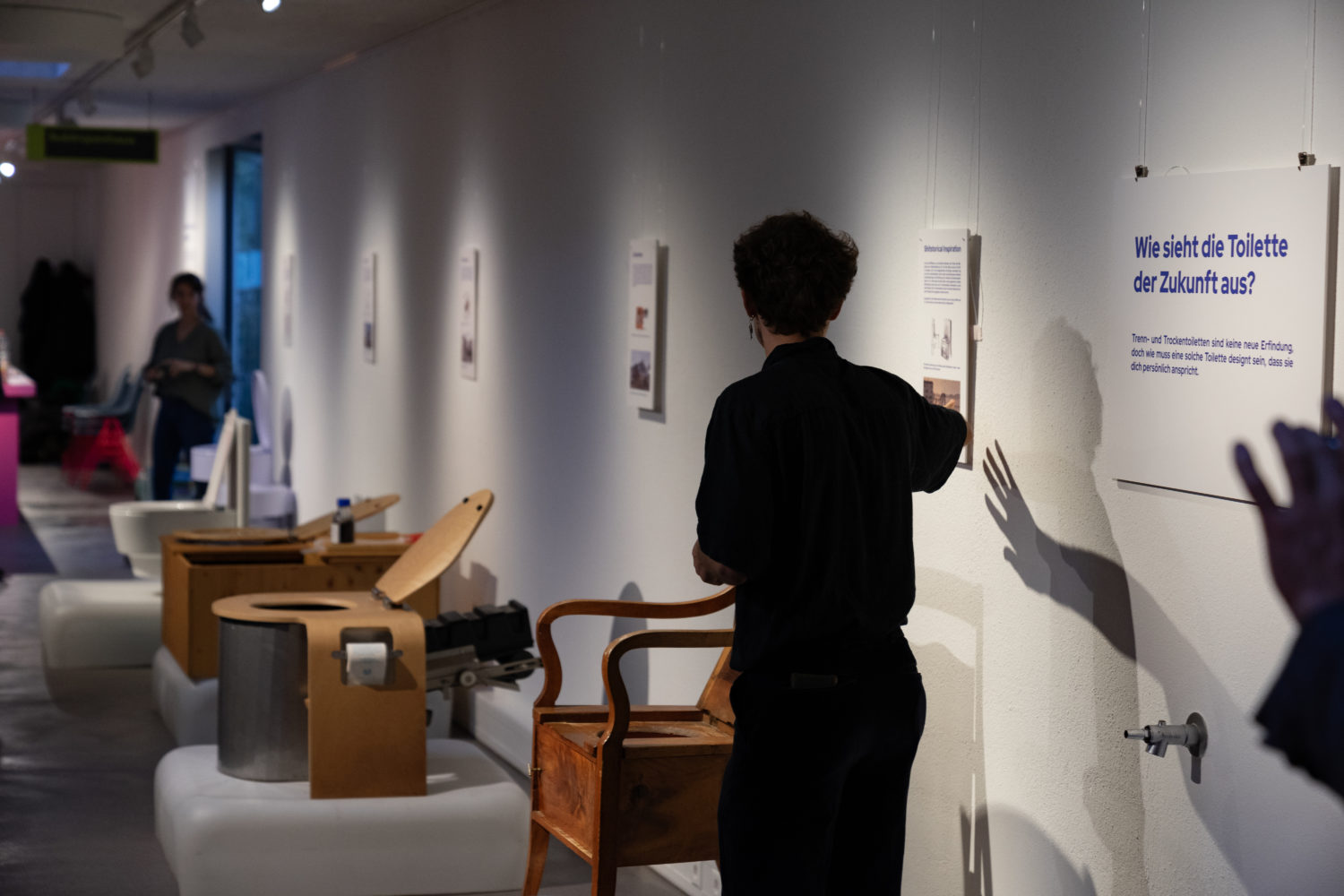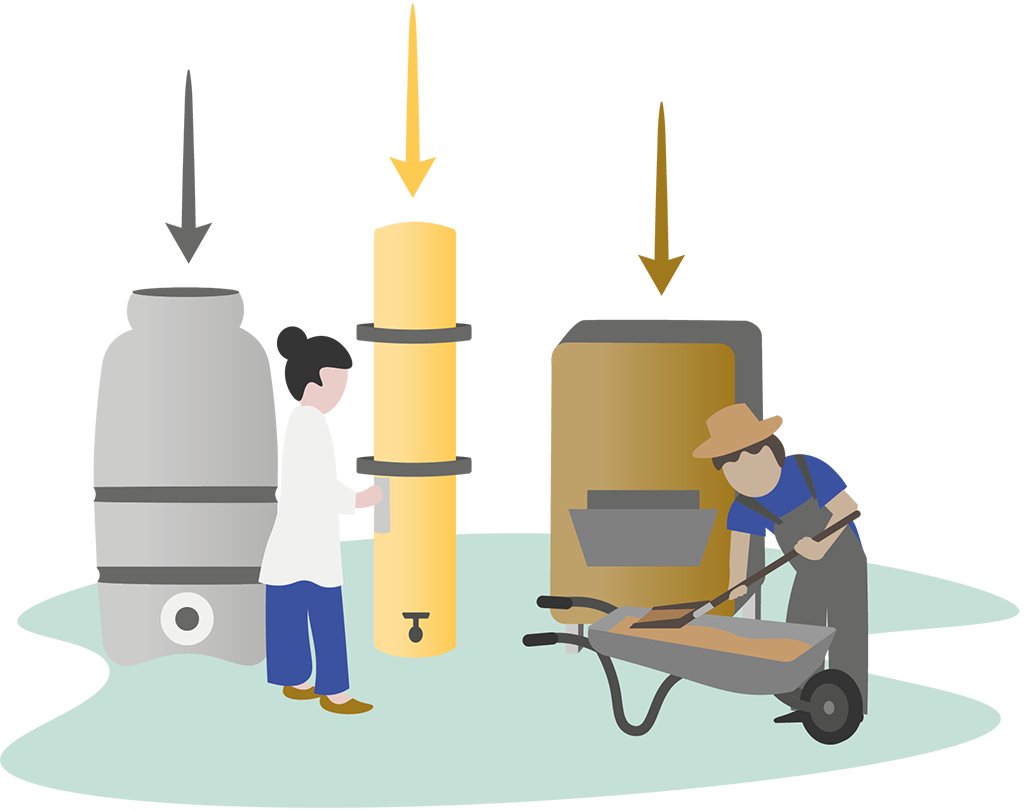Collection & Treatment

For many people, dealing with wastewater ends when they flush the toilet or remove hair from the drain. This attitude is referred to as “flush and forget.” [1] An achievement of matured industrialized nations? There is no doubt that alluvial sewers and centralized wastewater treatment have made tremendous improvements in terms of health, quality of life, and environmental protection [2] . However, there is also evidence that this type of wastewater treatment has various limitations [3]. But what actually is wastewater? What risks does it pose? To explore these questions, it helps to open our eyes a bit, to move away from understanding wastewater as waste and to focus on resources and, above all, resource efficiency. After all, what flushes down the toilet and seeps into the sink are valuable nutrients, energy and, above all, a lot of water!
Wastewater treatment options
In addition to nutrients and energy, wastewater also contains pathogens such as bacteria, viruses and parasites and an increasing concentration of micropollutants (for example, from pharmaceuticals, hormones and biocides). Wastewater treatment separates the valuable from the harmful. The former is upgraded for further use and the latter is deactivated and eliminated. In the process, as little energy as possible is used and emissions of pollutants and greenhouse gases are largely avoided. In fulfilling all these tasks, central wastewater treatment plants are increasingly reaching their limits [4] . In particular, the recovery of nutrients turns out to be costly and resource-intensive if it is approached in a centralized way and after mixing different types of wastewater in the sewage sludge . The high quantities of flushing water ( usually drinking water quality), which are a prerequisite for reliable operation of the alluvial sewer system, also become a problem as water shortages increase.
Decentralized treatment as an alternative
In combination with separation at source (link article), decentralized, i.e. near-source, treatment processes offer various advantages in this context:
- The separated streams (yellow, black, gray; link to detailed discussion of separated streams, see below) are less complex in their respective compositions, allowing specific and very efficient procedures to be applied.
- By avoiding long transport routes and storage times, biological processes can be prevented and associated emissions avoided.
- Cycles for water and nutrients can be closed on site (link to Reuse and Production).
- Based on modular subsystems, new interfaces can be used, further material flows (e.g. rainwater or biowaste) can be integrated and thus the handling of resources can be approached holistically.
Decentralized, modular (waste) water management can also be attractive from an economic point of view. This is not a matter of completely replacing an existing sewer-based wastewater treatment system. In remote locations, where settlements are growing rapidly, or where investment capital is lacking, decentralized solutions can be more cost-effective. The prerequisite for this is that the technology required for the specific treatment processes, can be standardized and is not too complex, so that they can also be regulated and tested (Ref. Advocacy Group).
Decentralized treatment processes for separate wastewater streams
Various proven processes are already available today for the decentralized treatment of yellow water, or diluted urine, [5] . As a rule, the urine is stabilized in a first step (e.g. by nitrification or a strong increase in pH) and the substrate is concentrated in a second step (distillation, evaporation). Further intermediate steps exist to filter out drug residues. Pathogens are deactivated by a specific increase in pH or by heating (during distillation). The aim of these processes is to produce a fertilizer that is permissible for agriculture and horticulture [6] .
Proven technologies also exist for the decentralized treatment of graywater, ranging from simple passive applications such as plant filters to more complex processes with ozone treatment and remineralization for the treatment of water with drinking water quality [7].
For on-site treatment of blackwater / brownwater, the most experience to date has been gained with biological processes (composting, worm composting, stabilization ponds). The decisive factor here is the amount of rinsing water used for transporting and processing the black water. An extreme case here is Dry toilets , where no additional water is used. In conventional flush toilets, on the other hand, a volume ratio of water to feces of >20 can be assumed. In this case, a solid-liquid separation process is usually used, followed by different processes for the separated streams. Due to the high concentration of organic compounds, black / brown water can also be used for energy purposes. The energy stored in the fecal matter can be used as process heat in the treatment process (e.g. sterilization) or as heat for a building [8].
Text: David Hasler
Editing: Dorothee Spuhler
References
News about Collection & Treatment

Event
19.11.2024 |
Stadtgärtnerei
World Toilet day & Finissage

Event
09.11.2024 |
Stadtgärtnerei
Martinimarkt

Event
18.10.2024 |
Lidernenhütte
Alpine Abwasseraufbereitung: Exkursion

Event
21.06.2024 |
Trub


